Baltic Fleet artillery in offensive operations 1944 of the year.
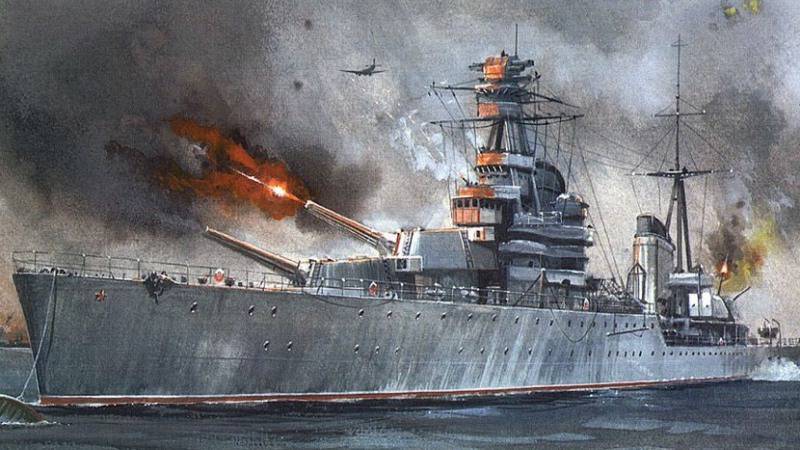
During the Great Patriotic War, one of the tasks fleet was the support of the coastal flanks of ground troops by naval and coastal artillery. A huge destructive force, a large firing range, the ability of naval artillery to move over considerable distances in a short time and to influence the enemy for a long time - these positive qualities of naval artillery were taken into account when planning its fire assistance to the coastal flanks of the ground forces.
The artillery of the Navy was attracted for artillery preparation, as well as for supporting and escorting army units on coastal directions when conducting combined-arms offensive operations, during the landing of assault forces and in the defense of coastal sectors (districts).
The main principle of the use of fleet artillery for fire support of the army in the offensive was the principle of massing it in the direction of the main attack of the troops, as well as during strikes on the most important objects of the enemy, located in the depth of defense.
The development of questions of artillery assistance and the drawing up of a plan for the use of naval and coastal defense forces, according to the general plan of interaction, was carried out by the front headquarters (army) together with the fleet headquarters. In terms of the use of fleet artillery, the following were envisaged: forces and means of the Navy brought to assist; fire support areas; connections of ground forces with which the fleet interacts; artillery tasks; combat control schemes.
This article is limited solely to the actions of naval artillery during the offensive operation near Leningrad in January 1944. The Soviet troops had to break into a powerful, deeply echeloned German defense, perfected by the 18 of the German army during 2,5 years. The artillery group of fascists had more than 160 batteries here, including siege batteries of 150 and 240 mm. The tactical zone consisted of a developed system of powerful resistance nodes and strong points. Particularly strong was the defense south of Pulkovo Heights, where there were not only artillery and rifle bunkers, but also solid pillboxes of reinforced concrete construction, as well as rows of anti-tank ditches, dolbes and escarpes. For shelling of Leningrad, the German command created two special artillery groups. They included 140 batteries.
The command of the Leningrad front decided to strike the main blow with the troops of the two armies: the 2 shock — was to launch an attack on Ropsha from the coastal bridgehead and 42 from the southern part of Leningrad on Red Village, Ropsha. The Red Banner Baltic Fleet (CBF) was to assist the maritime flank of the ground armies in this offensive. In this regard, the fleet artillery was tasked with covering up the transfer of troops to the southern coast of the Gulf of Finland during the deployment of army units and conducting powerful artillery preparation before the start of the offensive ground armies. In addition, it had to continuously support the advance of ground units in the Krasnoselsko-Ropshinsky direction and ensure their flank from the Gulf of Finland to the line of the Narva River, destroy defense facilities, suppress batteries, “neutralize” observation posts, headquarters, communications centers, disrupt ground communications , apply massive artudary in places of accumulation of reserves and enemy rear. The use of naval artillery in the operation was essential. Long-range artillery of the Navy could destroy the enemy in the second defensive zone, which favorably differed from most of the field artillery.
Attracted naval artillery was divided into five artillery groups. In his order, the head of the coastal defense of the Red Banner Baltic Fleet set fire missions to each art group and distributed general fleet reconnaissance and fire adjustments. The planning of fleet artillery fire at the coastal defense headquarters was carried out on the basis of the tasks defined by the front commander artillery. During the operation, they were updated by army headquarters through liaison officers of the coastal defense headquarters.
In the first group there were 95 guns in caliber from 76,2 to 305 mm. Its members included the artillery of Kronstadt and its forts, artillery Izhora sector, armored trains "Baltiets" and "For the Motherland", a group of warships of the Kronstadt Naval Defense District (KMOR) - the battleship "Petropavlovsk" (nine 305-mm guns), destroyers "Scary »(Four 130 mm guns). "Strong" (four 130-mm) and gunboat Volga (two 130-mm), as well as the 2 shock army, which was quickly assigned to the commander, three 152-mm and two 120-mm batteries. Since the task of the group was to assist the 2 shock army, it was transferred to the operational subordination of the commander of the artillery of the army.
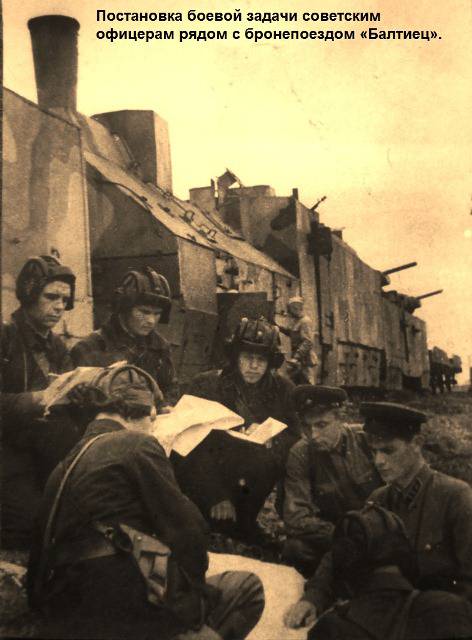
The artillery of the other four groups was used mostly in the Krasnoselsky area. The second group included the battleship "October Revolution", the cruiser "Tallinn", "Maxim Gorky", "Kirov", squadron destroyers. Artillery of the third group consisted of a division of destroyers and gunboats. The fourth group consisted of artillery range guns: one 406-mm, one 356-mm and five 180-mm. These three groups were under the operational control of the chief of the coastal defense of the Red Banner Baltic Fleet. They had to destroy the nodes of resistance, command and observation posts, headquarters, rear, communications centers, roads in the depths of the fascist defense, forbid the approach of its reserves.
The fifth group was the 101-I naval brigade of railway artillery. She identified a 51 gun for operation (three 356-mm, eight 180-mm, eight 152-mm and 32-130-mm). This group had the task to suppress the long-range artillery of the fascists in the areas of Carefree and Nastolovo, to paralyze the enemy movement on the roads, disrupt the work of his command and observation posts and communications centers, to counteract the shelling of Leningrad.
In total, 205 guns of only large and medium caliber guns were used to support the actions of the front forces, which significantly increased and improved the artillery of the Leningrad Front. The control of the artillery of the Red Banner Baltic Fleet, allocated for the fire support of the troops of the front, was strictly centralized.
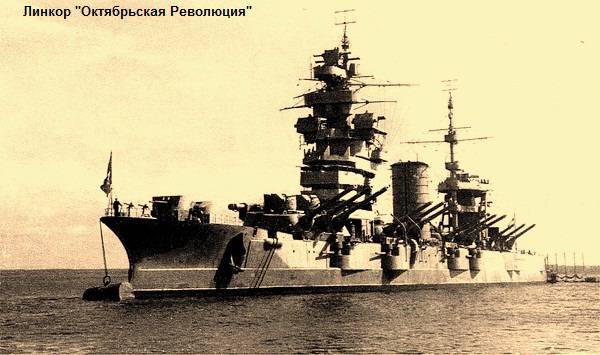
The planning tables of the fire groups were compiled only for the first two days of the operation. With its development, the fleet artillery fire was planned on the eve of the next day of the offensive, either opened at the request of the artillery commanders of the front (army) with the approval of the chief of the coastal defense of the Red Banner Baltic Fleet, or by their direct order. Such a system basically ensured accurate control of the fleet artillery fire and the timely execution of fire missions in the interests of the ground forces. In order to ensure timely fire on targets detected by means of reconnaissance of divisions and ships, the latter were granted the right to independently open fire in their sectors.
Indicative in this operation is the fact that each group was given one or two artillery reconnaissance platoons, and a network of observation posts was deployed, which at the beginning of the operation numbered 158. The interaction between the observation posts and the command gear of the combined-arms commanders was thoroughly tested. The considerable density of artillery reconnaissance made it possible to conduct it along the whole front, fully ensuring the artillery’s need for fire adjustment. Intelligence data were carefully analyzed and communicated to all parts of naval artillery. Thus, they had accurate information about the enemy troop and artillery groups and the nature of the bridgehead engineering structures.
Since a large number of naval and field artillery took part in the artillery offensive, and it was territorially divided, special attention was paid to the organization of control during the offensive operation. Two exercises were conducted, where mainly the provision of communications and fire adjustments was practiced. At the same time, liaison officers were assigned to the headquarters of the supported units. They were appointed from the best-trained artillery officers.
The preparation of the fleet artillery to perform tasks ended with the adjustment of bench marks located at a distance from 500 meters to 2 kilometers from targets. It allowed to mislead enemy reconnaissance regarding the tasks of using our artillery, to make calculations for the suppression of all planned targets.
The offensive of the troops of the Leningrad Front began on January 14, 1944 with the Oranienbaum bridgehead. The artillery of the first group, along with the artillery of the 2nd shock army, bombarded the batteries, headquarters and rear facilities of the Nazis. In 65 minutes, two firing raids, alternating with methodical fire, were fired for all targets, more than 100000 shells and mines were fired. Powerful artillery and aviation blows the defense was hacked. The 2nd shock army went on the offensive and on the third day broke through the German main defense zone, wedging to a depth of 10 km and expanding the breakthrough zone to 23 km. On January 15, a powerful artillery preparation of the offensive of the 42nd Army in the Krasnoselsky direction began. Navy artillery fired simultaneously at 30 targets. In 2,5 hours, she fired 8500 shells with a caliber of 100-406 mm. Going on the offensive, the 42nd Army met with fierce opposition from the enemy and in 3 days they advanced only 10 km. From the fourth day, the resistance of the Nazis began to weaken. The KBF artillery transferred fire to the main strongholds in the areas of Krasnoye Selo and Ropsha, and German troops retreating to Krasnogvardeisk. Here the sailors-gunners of the battleship “October Revolution”, the cruisers “Kirov”, “Maxim Gorky”, the leader of “Leningrad” and the 101st naval brigade of railway artillery distinguished themselves. The counter-battery struggle was also very effective. As a rule, the enemy’s batteries were covered with fleet artillery fire and fell silent, making no more than two or three volleys. On January 19, the 2nd shock army occupied Ropsha, and the 42nd - Krasnoye Selo. At the end of the day, their moving parts met in the area of the village of Russo-Vysotskoye. Peterhof-Strelninskaya German group ceased to exist. The defeat of her was important. German troops were driven back from Leningrad for 25 km.
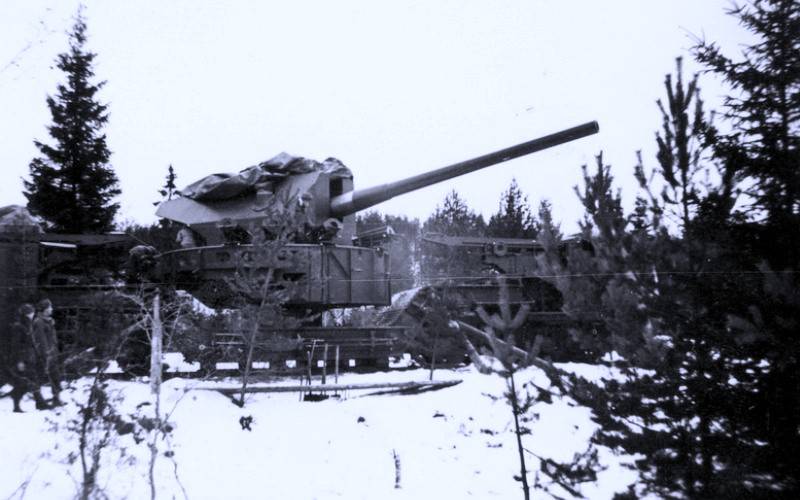
During the fighting, two German divisions were completely defeated and five suffered serious losses. Soviet troops captured 265 guns of various calibers, including 85 heavy from the artillery group firing at Leningrad, 159 mortars, 30 tanks, 18 warehouses, as well as a huge number of small arms and other military equipment.
Of great importance in the artillery support of the advance of the infantry was the railway artillery of the fleet. She changed firing positions and followed the troops of the Leningrad Front. Railway batteries suppressed enemy artillery and its resistance units with their fire, clearing the way for the advance of the Soviet infantry and tanks.
The field artillery, having a relatively limited range of fire, did not have time to accompany the rapidly advancing infantry. These tasks were assigned to the naval artillery, which successfully completed them. Naval artillery, carrying out a maneuver with fire, crushed defenses, contributed to the offensive forces. General military officers gave a positive assessment of its combat activities. In total, during the operation, the naval artillery fired 1005, using 23624 projectile caliber 76-406 mm.
In breaking through the main line of enemy defense, the massing of artillery played an exceptional role. The main features of the use of naval and coastal artillery were: the separation of its combat formations, which made it possible to consistently transfer fire to the depths of the enemy defense and focus it on important areas; widely used in large-caliber artillery operations with the task of destroying enemy defenses.
Of great importance was the fleet artillery in the Vyborg offensive operation (June 1944 of the year). The enemy has created a powerful echeloned defense 90 km deep on the Karelian Isthmus. In the 21 Army Action Band, intelligence set 348 targets, which could not be destroyed by artillery with a caliber lower than 122 mm.
The fleet artillery was tasked with: on the eve of the day of the attack, together with the army artillery, to destroy the enemy resistance and fortifications in the Beloostrovsky area; to participate in the artillery preparation of the offensive when the first line of defense breaks through, to support the troops when the second and third lines break through, to accompany the attacking troops with fire; neutralize and suppress enemy batteries and art groupings; to disorganize the enemy’s command and control by strikes at headquarters, command posts and communications centers; strikes on railways and highways and junctions in the rear of the front — Terioki, Raivola, and Tyurishev — prevent the maneuver by forces and supply of reserves.
Four groups were organized for these tasks: the first is 1-I Guards. naval brigade of railway artillery (42 guns from 130 to 180 mm); second - coastal artillery KMOR that included Kronshtadtsky sector with linkorom "Petropavlovsk», 4 5 destroyers and gunboats of the rocky brigade vehicles, artillery Ust Izhora train artdiviziona (HO caliber guns 100-356 mm); the third is one 356-mm and one 406-mm guns of the marine artillery range; the fourth - squadron ships: the battleship "October Revolution", the cruiser "Kirov" and "Maxim Gorky" (21 gun 180-305 caliber mm).
According to the decision, the ships, railway batteries of the fleet allocated for the operation were regrouped. Part of the railway artillery brigade relocated to the Karelian Isthmus, where railway tracks and shelters were equipped. A number of railway batteries from the Pulkovo area were relocated to the Greater Izhora area. The squadron ships were pulled closer to the front line: the battleship and cruisers were transferred to the Leningrad commercial port; destroyers "Glorious" and "Vice-Admiral Drozd" in Kronstadt. For the gunboats they equipped maneuverable positions north of Kotlin, in the area of the Tolbukhin lighthouse and on the East Kronstadt roadstead. Artillery reconnaissance intensified. All this provided the possibility of the impact of the Red Banner Baltic Fleet artillery on the entire enemy tactical depth of defense.
To support the constricting actions of the 23 Army, the Ladoga Military Flotilla formed a detachment of fire assistance from 3 gunboats and 4 patrol boats. The commanders of art groups were subordinate to the commander of the artillery of the Red Banner Baltic Fleet. Planned fire was opened only by order of the fleet artillery commander. At the same time, the group commanders were given the right to open fire independently when conducting counter-battery combat, destroying enemy forces observed in the area of responsibility, as well as at the request of the attacking troops.
Important was the adjustment of artillery fire. For this purpose, 118 observation-correction posts, 12 spotter planes and one aerial observation balloon were allocated.
Vyborg operation took place from 10 to 20 June 1944. On the morning of June 9, on the Karelian Isthmus, naval and field artillery with front aviation delivered a powerful preliminary strike against enemy engineering defensive installations on the entire tactical depth of the first line of defense. The fascists fired back observation posts, batteries and ships. Therefore, our artillery had to not only destroy the defenses, but also engage in counter-battery wrestling. Poor visibility and strong opposition of the enemy did not prevent the solution of the task, which was due to good organization, as well as high-quality adjustment of fire from aircraft. The 176 targets from the 189 targets were completely destroyed.
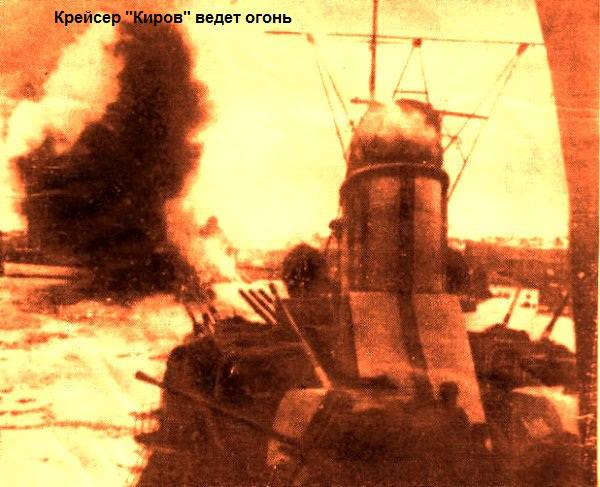
Operating by all four groups, fleet artillery opened fire 156 once. Of the 24 targets identified, 17 targets were completely destroyed and 7 targets partially. In addition, the sailors put down 25 active batteries. During the day of the battle, they used up a 4671 projectile. It is important to emphasize that the fleet artillery destroyed the enemy’s long-term fortifications, deep in its defenses, and often inaccessible to field artillery. At the same time, she suppressed a large number of heavy batteries that interfered with the actions of our land artillery. On the night of June 10 fleet artillery periodically fired, not allowing the enemy to restore the defense. A number of large centers of resistance were suppressed, many enemy command and observation posts were destroyed, the work of rear communications was paralyzed. As a result of an artillery strike, a significant part of the fortifications of the enemy of the first line of defense was destroyed, and the enemy suffered significant damage.
10 June, anticipating the attack, was carried out aviation and artillery preparation, which lasted more than three hours. It was attended by aviation and artillery of the army and navy. The massive front artillery fire, powerful coastal batteries and ships largely determined the success of the 21 Army, whose troops had broken through the fascist defenses by the end of 10 June and advanced to 14 km. Overcoming the fierce opposition of the enemy, the 21 Army and the offensive launched on June 11, the Army continued to advance. 23 June they went to the second lane of defense.
The offensive of the 21 Army along the Gulf of Finland was accompanied by artillery support from the Red Banner Baltic Fleet and coastal defense ships. The ships of the Ladoga military flotilla securely covered the flanks of the 23 Army and provided artillery support to its right-flank units.
On June 14, having conducted artillery and aviation training, the armies of the Leningrad Front broke into the second lane of the enemy defenses, and the 17-21 went to the third lane. 20 June as a result of the assault was busy Vyborg.
During the operation, the enemy put up fierce resistance. To enhance our strike, maneuvering by firing positions of artillery of the fleet was widely carried out, which made it possible to extend its operations to the entire strip of offensive actions of the main front grouping. From June 16, the ground troops of the 21 Army were supported by gunboat and armored boat fire. June 19, one of the fleet's railway batteries, advanced along with the ground troops' battle formations, fired on Vyborg.
During the Vyborg operation, naval artillery conducted 916 firing, using 18443 projectile caliber from 100 to 406 mm. It destroyed 87 resistance centers, fortifications, headquarters, warehouses, destroyed 58 enemy tanks and a large number of other equipment.
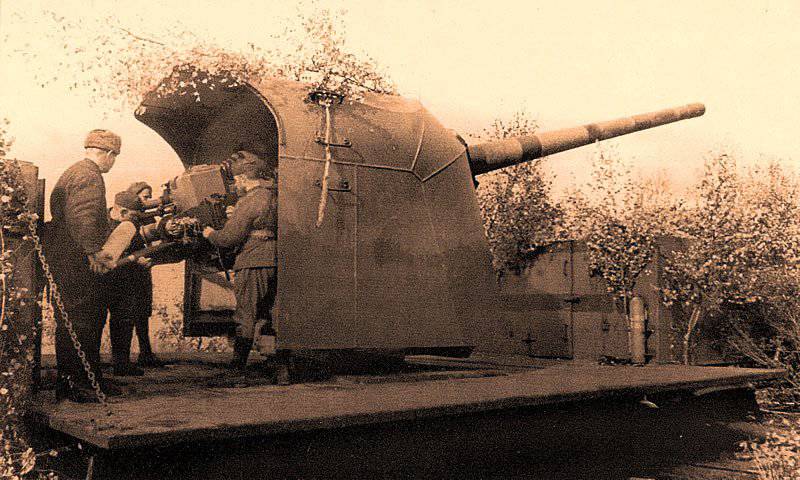
Features of the use of naval artillery in the army offensive operations were: fire assistance to the coastal flank of the front to the full depth of the offensive; assisting the army in breaking the powerful defensive lines in the main line; the widespread use of railway batteries and ship artillery; high firing efficiency, as a result of good training of forces, organization of artillery intelligence and corrections: the use of naval artillery for counter-battery combat.
So, during the offensive of the troops of the Leningrad Front, the artillery of the Red Banner Baltic Fleet was widely used to fire assistance to the maritime flanks of the land armies. Possessing great power and firing range, it was used as long-range artillery. The great mobility of the naval and naval railway artillery made it possible to concentrate it on the necessary directions and to support it with fire from the troops leading the offensive.
Sources:
Perechnev Y. Soviet coastal artillery. - M .: Science, 1976. C.148-188
Achkasov V., Basov A., Sumin A., et al. The combat path of the Soviet Navy. M .: Voenizdat, 1988. C.238-310
G. Odintsov. Soviet artillery in the Great Patriotic War 1941 - 1945. M .: Voenizdat, 1960. C. 321-328.
Shirokorad A. Time of big guns. Battle of Leningrad and Sevastopol. M .: AST, 2010. C.241-269.
Markov I. Assistance of naval artillery to the offensive of the troops of the Leningrad Front in January and June 1944. // visage 1977. No.1. C. 29-35.
Basov A. Soviet fleet on the protection of socialism. M .: Enlightenment, 1985. C. 203-206
Tributs V. The Balts are fighting. M .: Voenizdat, 1985. C.315-337
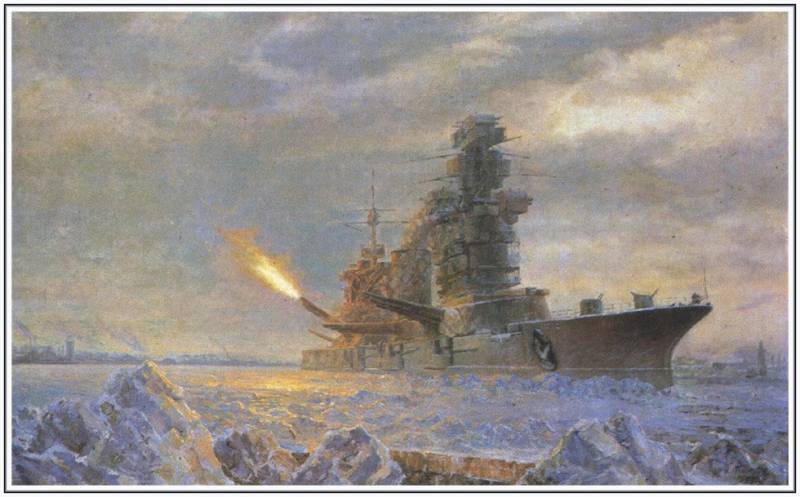
Information